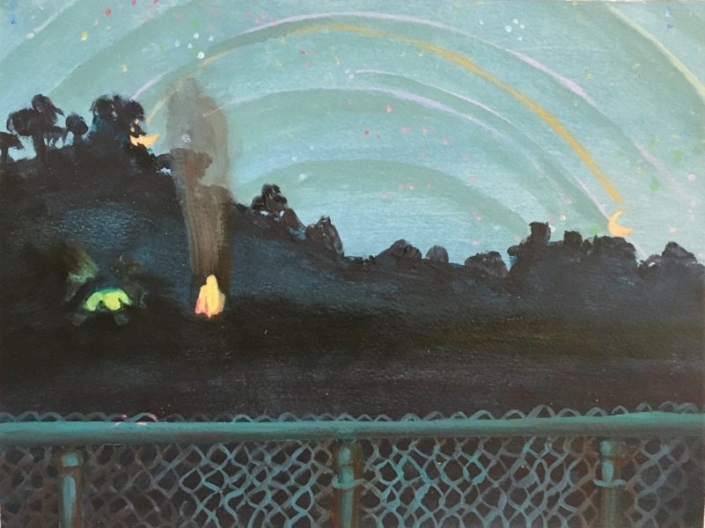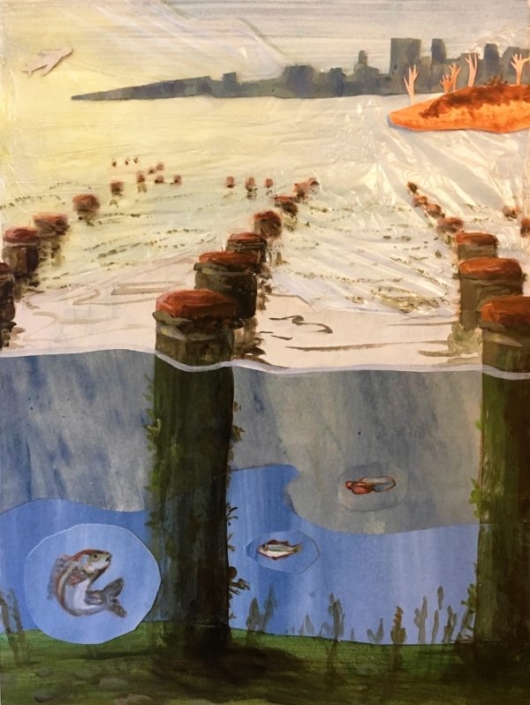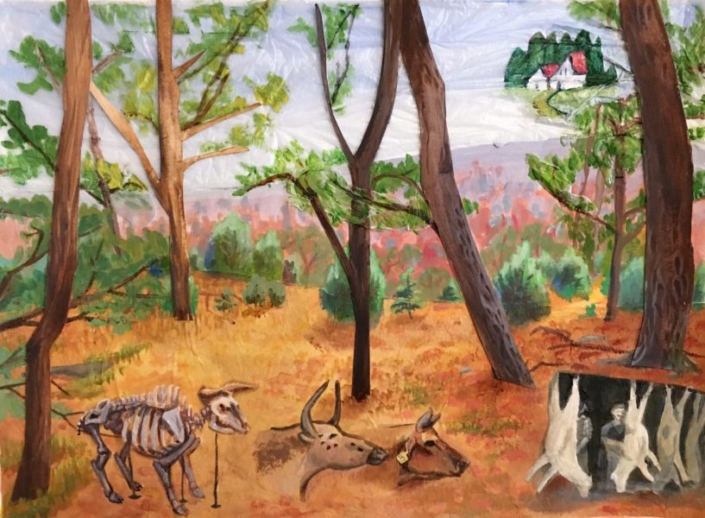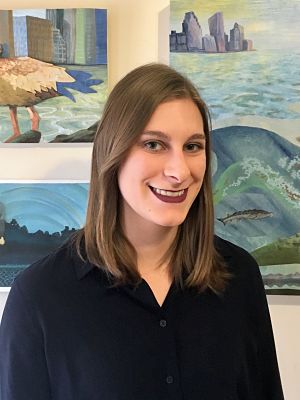Contemporary Landscapes: Acrylic Paintings
Artist Statement
I construct landscapes using industrial materials such as plastic bags and acrylic paint (which contains plastic). The work explores how people and animals interact with natural and man-made environments. How do borders separate people from their environment and from one another? How do current colonialist and capitalist paradigms about land ownership differ from the relationships of our past? My landscape pieces explore themes of displacement, migration, and co-habitation between people, animals, and plants.
Today people often feel alienated from nature, but in fact human activity affects nearly every ecosystem on the planet. Since I live in New York, I study local wildlife through landscape paintings. New York is home to a range of environments, from ancient forests in the Catskill Mountains to polluted urban ecosystems, such as the Hudson River watershed in New York City. The painting Hudson River Skyline reimagines the city from a fish’s eye view, including man-made river piers, which are repurposed into habitats for river plants. Collaged paper cutouts represent the displacement of the majority of species that once lived in the area. The city skyline is collaged as well, implying that human development may not be as permanent as it seems. The upper half of the painting is covered in a thin layer of plastic.
The painting Cattle Evolution is inspired by our ancient relationship with cows. Modern cattle were domesticated from aurochs, a wild prehistoric cow that is extinct today. The painting is dominated by an empty, idealized landscape where wild cows might have once lived. Suspended in the middle of the landscape, a Paleolithic auroch is painted along side a modern cow. The bottom right corner of the painting is based off a black and white photo of a 19th Century slaughterhouse factory, where poor immigrant workers had a much less spiritual relationship with livestock animals than in the past. The house in the upper corner is based on outsider paintings by homesick Bohemian immigrants who longed for a cottage in the woods as an escape from urban life in America. Perhaps cows living in a cramped industrialized world dream of open fields, just as Bohemian slaughterhouse workers dreamt of a countryside cottage.
The painting Night shows a campsite in the Catskill Mountains. Manmade structures such a fences permeate the natural landscape. The earth’s rotation is visible in the arch of the stars and moon in the night sky, creating a timeless serenity that contrasts with the temporality of the campsite. Both manmade and natural forces shape this landscape.




 Originally from Cincinnati, OH, Katrina Slavik currently lives and works in Brooklyn, NY. She has a BFA in painting from the Maryland Institute College of Art and she has also studied at the Bezalel Academy of Arts and Design in Jerusalem. Katrina has exhibited her work in New York, Baltimore, and Jerusalem. Katrina has been an artist resident at the Vermont Studio Center and she has collaborated on murals in Cincinnati and Nicaragua.
Originally from Cincinnati, OH, Katrina Slavik currently lives and works in Brooklyn, NY. She has a BFA in painting from the Maryland Institute College of Art and she has also studied at the Bezalel Academy of Arts and Design in Jerusalem. Katrina has exhibited her work in New York, Baltimore, and Jerusalem. Katrina has been an artist resident at the Vermont Studio Center and she has collaborated on murals in Cincinnati and Nicaragua.


